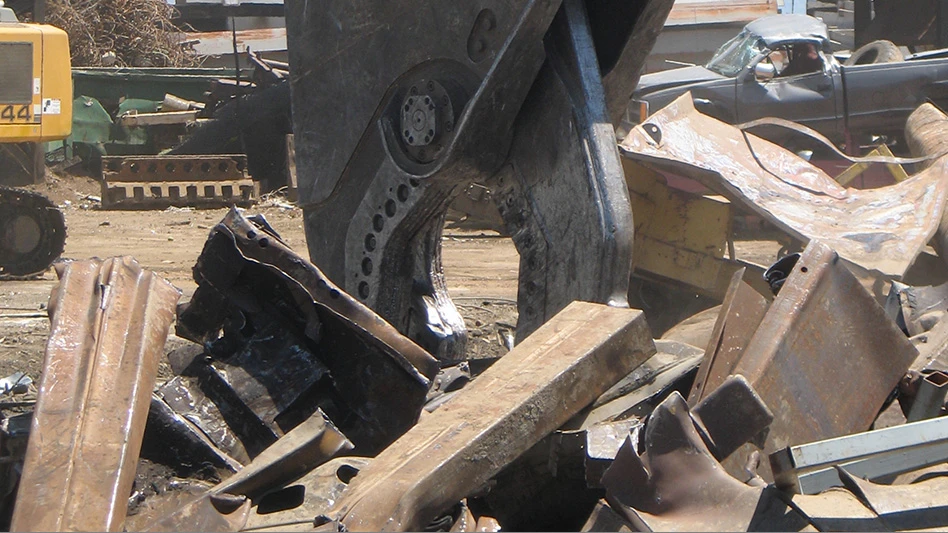There has been little incentive for any strengthening in demand for most nonferrous metals throughout Europe and Asia. Another factor is that with much of Western Europe in a difficult economic situation, financing has become more difficult.
A number of European scrap metal recyclers say the uncertainty over the economic health of many banks is creating a cascading effect, with banks less willing to provide loans to companies, which in turn is forcing many of these same companies to carry less inventory on hand. An end result is less demand for most types of nonferrous scrap from processors throughout Europe.
In the July Bureau of International Recycling (BIR) Non-Ferrous Mirror, Anton van Genuchten of the Dutch scrap company Reukema Blocq & Maneschijn says some scrap processing facilities in his region are operating at 50% to 60% capacity. Van Genuchten adds that the secondary aluminium market is under pressure and that producers are “no longer able to make a forecast for the coming months; they live from hand to mouth.”
During the BIR’s recent spring meeting, van Genuchten noted that “scarce supply” in Europe is limiting downward pressure on scrap prices.
Adding to the challenging environment in Europe, the Chinese economy, which had been growing at near double-digit levels over the past several years, appears to be decelerating in 2012. This retrenching in China has resulted in less demand for metals such as copper and stainless steel scrap.
European scrap dealers not only are seeing lower demand from Asian buyers, but they are seeing a sharp increase in container freight rates for shipments to China, which is further reducing their orders.

Along with higher shipping costs, there is a growing opinion that it is becoming far more challenging to ship containers into the country. With concerns over the quality of some container shipments, there continue to be reports that customs agents at Chinese ports are spending more time ensuring that shipments meet environmental criteria. Ultimately, this is slowing down the total process, adding to the downward pressure on a range of metals.
The Indian market, also an end market for a host of nonferrous metals, has been suffering from a recent drop in the rupee’s devaluation. According to a number of sources the Indian currency saw a 25% devaluation against the U.S. dollar, making shipments from the United States to India much more expensive.
The Middle East also has been hit with some of the collateral damage from India’s currency woes as a growing amount of nonferrous scrap purchased by India comes from the Middle East.
With little activity through most parts of Europe and demand slowing through most of Asia, several sources say there are greater opportunities to ship material from Europe to the United States.
Aluminium markets continue to struggle with slack demand throughout all regions of the world. While the automotive industry has been a bright spot for aluminium, prices for the metal continue to languish at low prices throughout the world. The grade recently touched a multi-year low. Due to the slide, some scrap metal recyclers are opting to inventory more of the material in anticipation of higher prices.
According to a Dow Jones news report, since 2007 global aluminium production has exceeded demand by 9.31 million tons. The report notes that Jean Simon, president and CEO of Rio Tinto Alcan, says that with aluminium prices hovering at around a two-year low, only about half of the aluminium smelters in the world are presently profitable.

Meanwhile, at press time there are reports that Rio Tinto Alcan has reached a deal with 800 union workers at its Alma, Quebec, aluminium smelter in Canada.
If the union workers agree to the deal it could end a labor dispute that began Dec. 30, 2011, when the company locked out its employees after failing to reach an agreement.
Copper markets continue to be volatile, although there appears to be a trend toward the downside. There are several spot markets that have been increasing their purchases, but for the most part the overall trend appears to be “wait and see.” Several scrap metal recyclers say that the near-term outlook is murky at best. Because of this, many are looking to keep as little inventory on hand as possible out of fear of a much sharper price drop later this summer.
In China, one recent plan to build a secondary copper smelter in a western province has been met with significant resistance from residents of the area.
According to multiple news reports, a plan by the Chinese company Hongda Group to build a $1.65 billion molybdenum copper project in Sichuan Province was canceled after residents protested concerning the pollution risks to the surrounding area.
After initially saying construction of the copper smelter would be suspended, government officials now say that the smelter would no longer be built at all in Shifang city in Sichuan Province, according to Reuters.
Latest from Recycling Today
- Phoenix Technologies closes Ohio rPET facility
- EPA selects 2 governments in Pennsylvania to receive recycling, waste grants
- NWRA Florida Chapter announces 2025 Legislative Champion Awards
- Goldman Sachs Research: Copper prices to decline in 2026
- Tomra opens London RVM showroom
- Ball Corp. makes European investment
- Harbor Logistics adds business development executive
- Emerald Packaging replaces more than 1M pounds of virgin plastic





